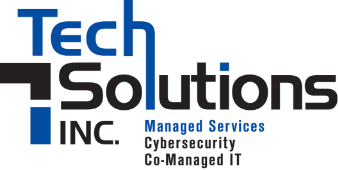March 15, 2019 by Rich Kenney
Some smaller businesses still feel more comfortable relying on their onsite “IT Guy” to handle their technology needs, while most other businesses have switched to using a Managed IT Services model. For years, the onsite “IT Guy” assured the small business owner that the company’s information (stored onsite) was protected, and that anyone with a problem could get help when needed because he/she was present. Then, everything changed.
The Cloud and Complex Networks: Moving to the cloud means that some or all the company’s data is not onsite anymore. The “IT Guy” is going to need help from network engineers with more experience to build and maintain a cloud or hybrid environment. Whether you are moving to the cloud to support remote workers, protect company secrets, increase efficiencies, or reduce hard costs, your onsite employee will need help before, during, and after the transition. This results in your company now having to pay an IT firm to provide the tools and the advanced support for our lonely, onsite “IT Guy”.
AI and Robots Take Over: Now, automation and artificial intelligence (AI) are increasingly used to identify and resolve problems before the employees even know there is a problem. So, old hard drives are replaced before they fail, software is automatically updated, email problems are identified before most people notice, and some internet connection issues are corrected before people even realize there is a problem to fix. The onsite “IT guy” simply just needs to follow up with the IT firm your company pays to get the details on how the problem was averted.
Cybersecurity Tools Mature: Over time, sophisticated enterprise cybersecurity management tools have become much better and easier to use. They also started moving into the small and medium business sector through the distribution channel of that same IT firm your company pays to support your “IT Guy”. For example, with only a few clicks of the mouse, one of the latest cybersecurity tools enables the office manager to control who has access to personal email while using a work computer. Other cybersecurity tools manage traffic on the network using artificial intelligence to learn what is happening and block malware and viruses that have somehow infected the network. IT automation is here and is always improving. As a small business employee, the “IT Guy” has no affordable way to access these tools without the help of that same IT firm.
Managed IT Service Firms Got Better: The right IT services company can be trusted to provide very quick and personalized support to help a member of your staff or one of your directors with a computer issue. With their ever-improving remote support tools, that tech company is ready and available on demand so you can get help when it is needed … even when the trusted “IT Guy” is on a cruise ship in the Caribbean or at home, sick in bed with the flu.
The Economics Changed: All those changes described above leave the onsite “IT Guy” with a lot more down time and a lot less to do, especially at a professional firm where his/her primary job role is to support the 15 or 25 or 45 other employees at the company. Additionally, the onsite “IT Guy” is expensive. When you combine the average salary for an “IT Guy” with 3-4 years’ experience performing basic network troubleshooting and maintenance with the benefits package, the payroll taxes, and the invoices from the IT firm working with him/her, the total number is considerably more than the cost of a Fully Managed IT Services Agreement to support 15-45 computer users for one year. And don’t forget to factor in the costs that are not clear-cut numbers such as office space, computer, cell phone, training classes, vacations, sick days, etc.
We believe that things will change for the onsite “IT Guy” at small to mid-sized companies. The good ones will adapt to a new role that uses IT to better serve customers and advance the mission of the business. Company decision makers, however, should begin to understand that allowing experts with better software, AI, robots, faster helpdesk response times, routine maintenance processes that results in fewer overall problems, and enterprise-class tools that help protect your data makes much more sense than the alternative. Someday soon, the onsite “IT Guy” in the small business sector could become a victim of better technology moving into the modern office.
Kinda ironic don’t you think??
